The Pentium G3258 Cheap Overclocking Experiment
You wanted a comparison of Intel's Pentium G3258 using low-cost platform components. Can an entry-level motherboard and bundled heat sink still deliver a satisfying overclocking experience, or does going cheap ruin this dual-core CPU's value appeal?
Results: Thief, Tomb Raider and WoW
Thief
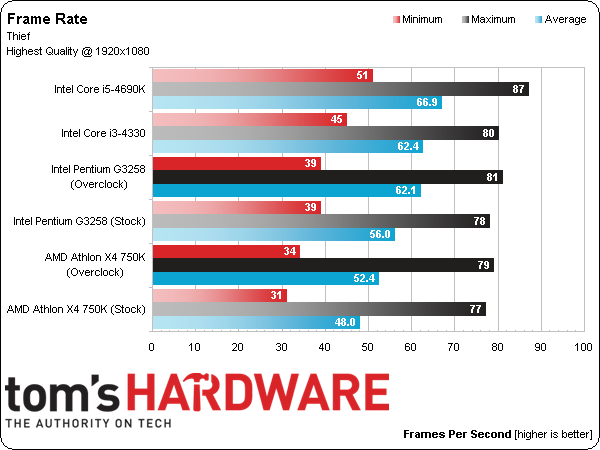
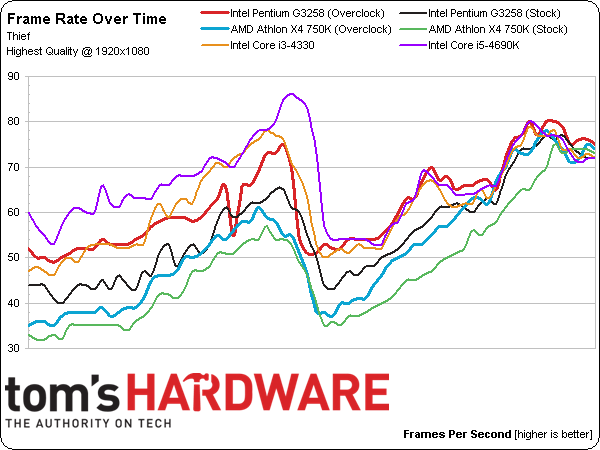
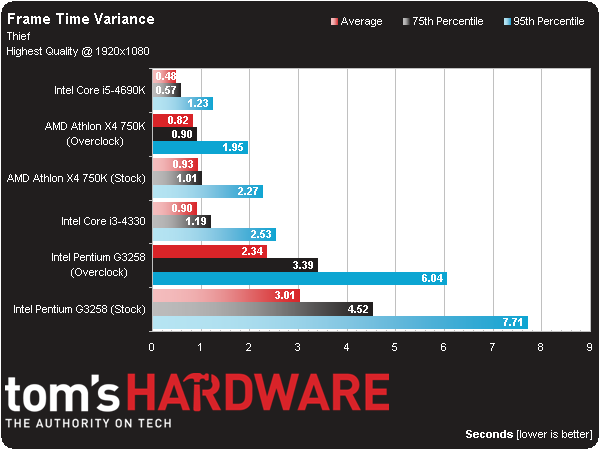
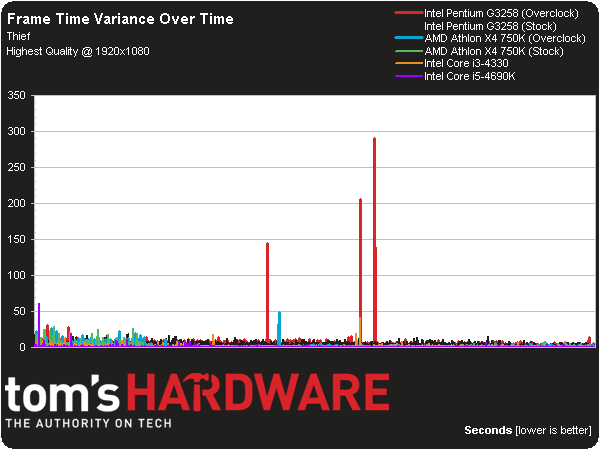
Even with the detail settings cranked up as high as they’ll go, the CPU you choose does make a difference in Thief at 1920x1080. Both Intel’s Pentium and AMD’s Athlon pick up quantifiable performance after modest air-cooled overclocks. As we’ve seen several times already, though, the dual-core Haswell-based chip shines a bit more brightly.
That advantage is diminished by frame time variance numbers indicating hitches and stutters in several places. This stuff isn’t new, either. In several games, Intel’s Haswell architecture delivers spectacular frame rates by virtue of its efficiency, but also stumbles over certain passages more than the quad-core contenders (notice the Core i5 and Athlon X4 at the top of our chart). Does the same phenomenon apply in Tomb Raider?
Tomb Raider
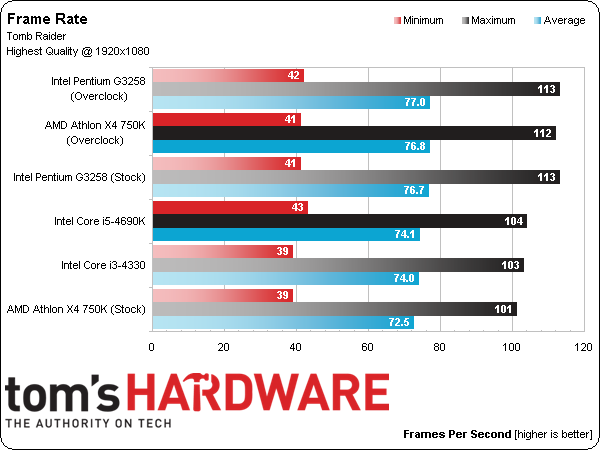
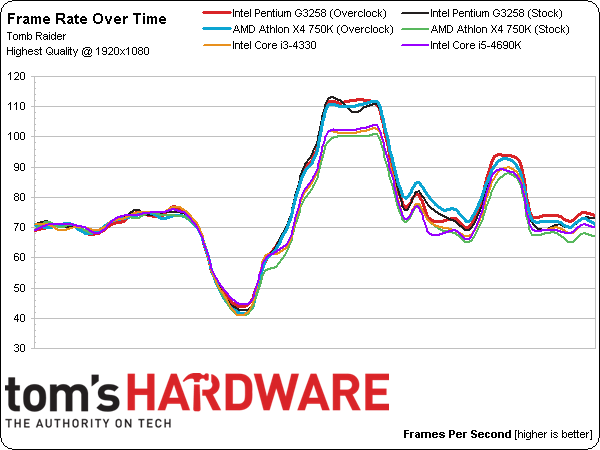
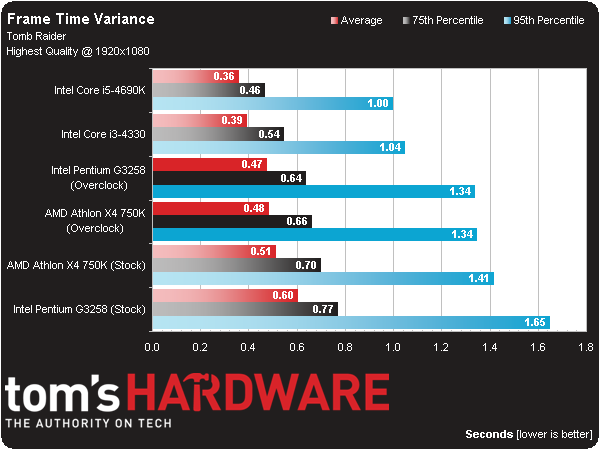
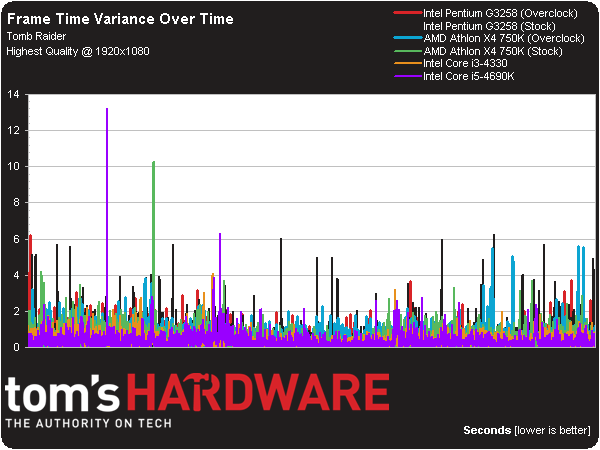
As with Battlefield 4, Tomb Raider is another title limited by the speed of your graphics card (even when you’re using a $1000 board). Our frame rate over time chart shows just how tightly each platform remains grouped—only the overclocked Athlon and Pentium CPUs (plus the stock Pentium) break away from the field.
When so much of the performance story is told by your GPU, don’t expect a host processor swap to affect frame time variance much, either. The dual-core Pentium doesn’t run into the same issues this time around.
World of WarCraft
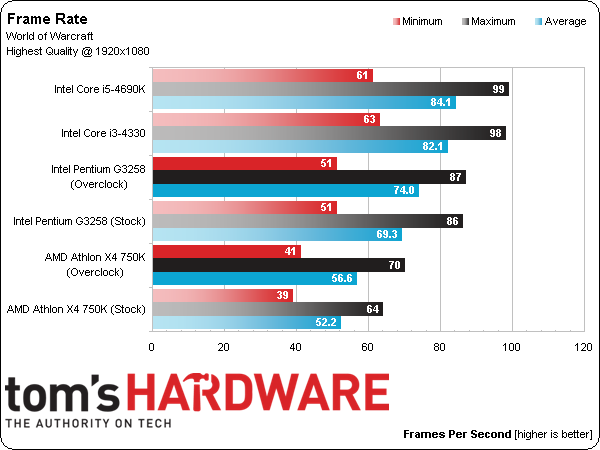
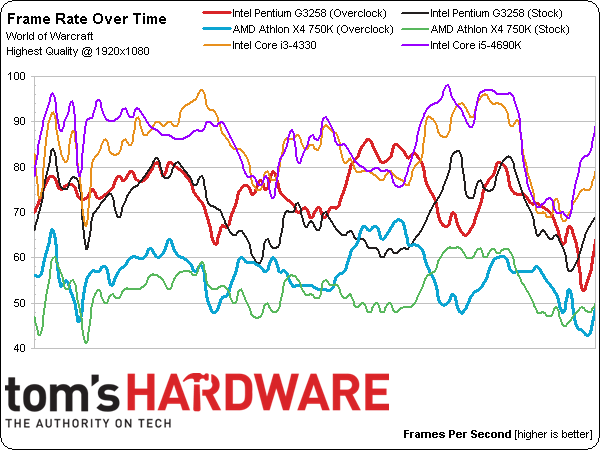
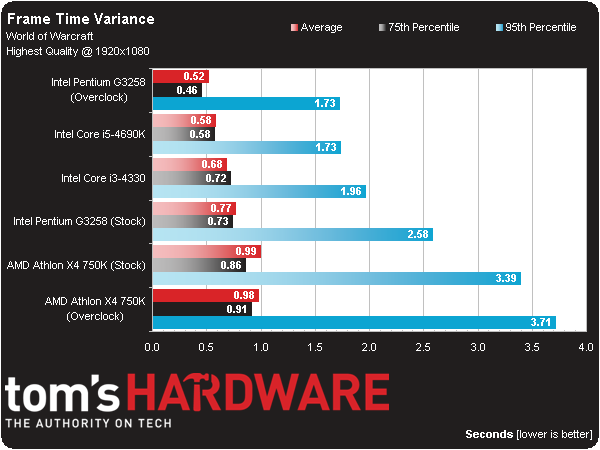
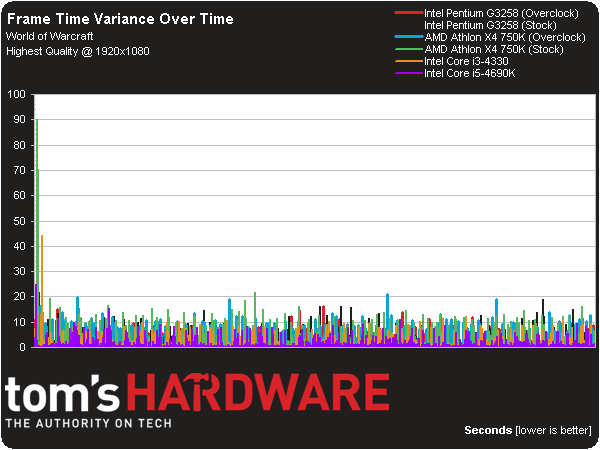
But World of Warcraft is an entirely different story; it’s heavily affected by CPU performance. Architectural efficiency and thread count both come into play. As a result, the Hyper-Threaded Core i3 and quad-core Core i5 take top honors, followed by Intel’s stock and overclocked Pentium G3258. AMD’s processors simply don’t do as well, consistent with other WoW-based benchmarks we’ve run over the years.
We might have suspected the dual-core Pentium to get punished in our frame time variance benchmarks. It doesn’t, though. Instead, the Athlon struggles most.
Get Tom's Hardware's best news and in-depth reviews, straight to your inbox.
Current page: Results: Thief, Tomb Raider and WoW
Prev Page Results: Arma 3, Battlefield 4, Grid 2 and Metro: Last Light Next Page Results: Synthetics-
Someone Somewhere First page (in bold heading):Reply
Wait, Did You Say B81?
You mean either H81 or B85, I'm guessing. -
vertexx Are you seriously running the Athlon on DDR3-1600 RAM? Please confirm as it's too difficult to be sure with all of the ridiculous adware you have baked into this article.Reply -
LucoTF Reply13828161 said:First page (in bold heading):
Wait, Did You Say B81?
You mean either H81 or B85, I'm guessing.
LOL
they were offered both and settled on the H81 -
tomfreak U guys should throw in Core 2 quad 9550/9650 and bench together or even the Nehelem quad core to compare.Reply -
cangelini @ Nuckles_56: the modules we used came from one standardized kit. Because the H81 and A78 platforms only offer two slots, we pulled two modules from the kit. The other boards gave us four slots, so we used four modules from the same kit. On an X79- based board, you'd see all eight in play.Reply -
Traciatim @TomFreak, Tom's have already done an old vs new article that tested the core2duo and Quad vs newer i3's an i5's. No reason to redo the tests since you can pretty much extrapolate about where your performance would sit if you look over both articles. Bottom line is it's probably not worth going from a Core2Quad that overclocks pretty reliably to an i3 or Pentium, but in most cases the i3 and newest unclocked Pentium would perform slightly better and use less power.Reply
http://www.tomshardware.com/reviews/ivy-bridge-wolfdale-yorkfield-comparison,3487-9.html
-
bdiddytampa If you are in the US and are close to a Microcenter, they offer a G3258 and MSI Z97 board bundle for $99. Killer deal for a cheap starter system.Reply
